1,570 days, 2,406 entries ...
Newsticker, link list, time machine: HOLO.mg/stream logs emerging trajectories in art, science, technology, and culture––every day
“Could this be your new signature scent? Sample it on your skin. My algorithm feels confident that it can deliver you the computer conjured scent of your dreams.”
“My version of feminist, queer, trans-affirmative politics is not about policing. I don’t think we should become the police. I’m afraid of the police.”
“Both The House of Dust and Cree# are microworlds, homes for forms of computing and expression that fall outside of the traditional purview of ‘information technology’ and industry-focused coding practices and tools.”
“Like powering an engine with the methane that comes from decomposing corpses in a graveyard.”
“WE DID THIS TO OURSELVES,” a survey of Ron Terada’s news and typography-focused works, opens at The Power Plant in Toronto. Grimly articulating the surrealism and noise of the post-truth information landscape, the Canadian artist’s monumental painting series TL;DR (2017-22) takes centre stage, immersing gallery visitors in the “overwhelming experience” of perusing a wall of weird tech headlines (collected from The Verge) rendered in the familiar and authoritative New York Times typeface.
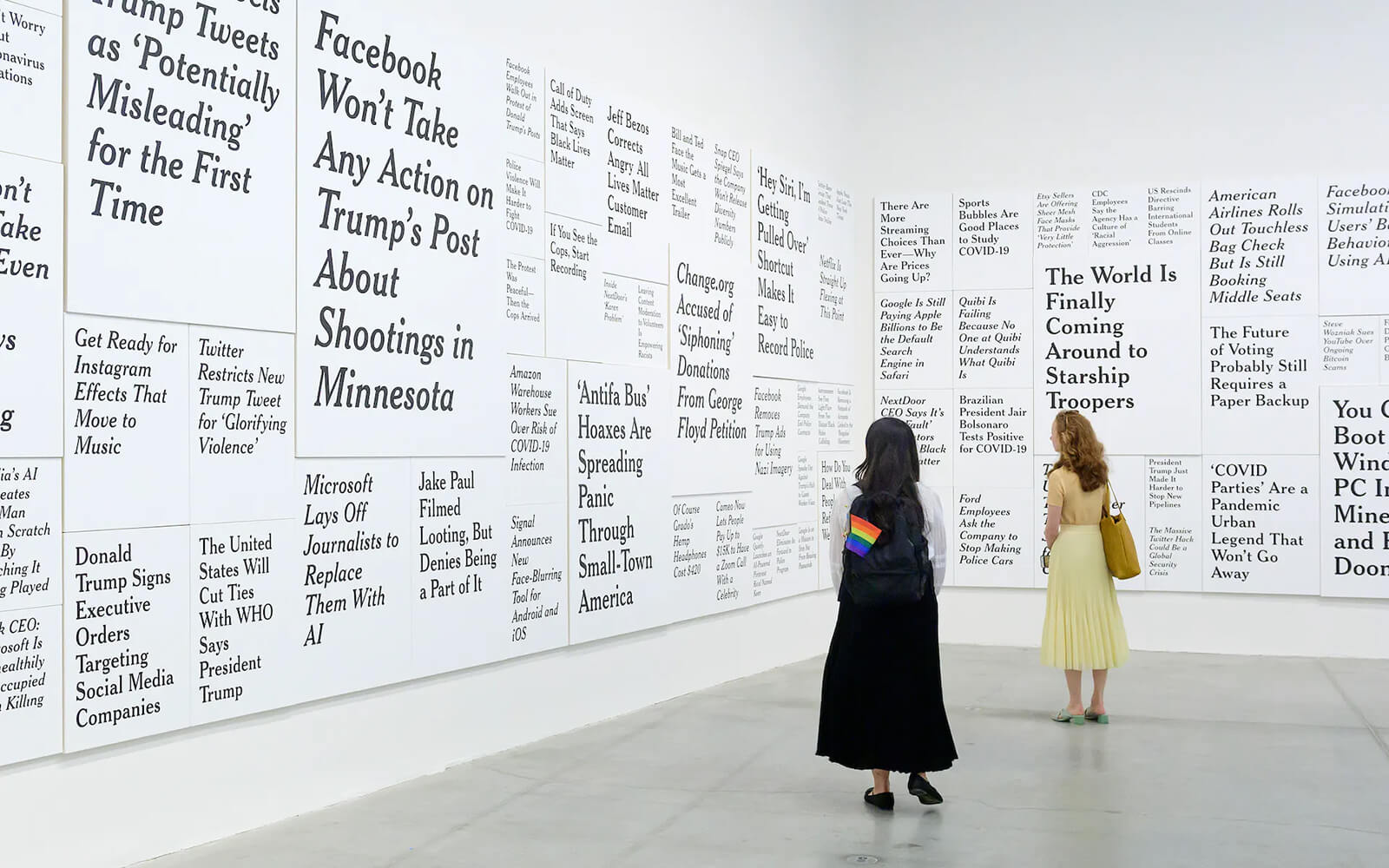
“I would pick a subject, write something on it, and then shrink the text to what I hoped were the essentials—banishing adjectives and dreck.”
“In the absence of a capacity to reason from moral principles, ChatGPT was crudely restricted by its programmers from contributing anything novel to controversial—that is, important—discussions. It sacrificed creativity for a kind of amorality.”
“Institutions make these standard statements, but oftentimes they address Indigenous communities as if they are from the past—when they are still present here today.”
“It seems that forcing a neural network to ‘squeeze’ its thinking through a bottleneck of just a few neurons can improve the quality of the output. Why? We don’t really know. It just does.”
“It’s like saying ‘we had knives before, so what’s the difference if we have a submachine gun?’ Well, a submachine gun is just more efficient at what it does.”
“Much within me is indeed worm, as I lie facedown, fused to my smartphone, in my blanket cocoon of proto-singularity.”
“The watermark looks completely natural to those reading the text because the choice of words is mimicking the randomness of all the other words.”
“DO COMPUTERS WORRY YOU,” an exhibition of recent work by Canadian artist Matt Nish-Lapidus opens at Toronto’s Collision Gallery. Presented alongside “Greenlight: Carlaw,” a companion exhibition by Simon Fuh, Nish-Lapidus deploys assemblies of custom networks and Printed Circuit Boards (PCBs) combining “industrial and domestic materials, found texts, and bespoke algorithms” into a materialized polemic for more poetic (and personal) modes of computation.
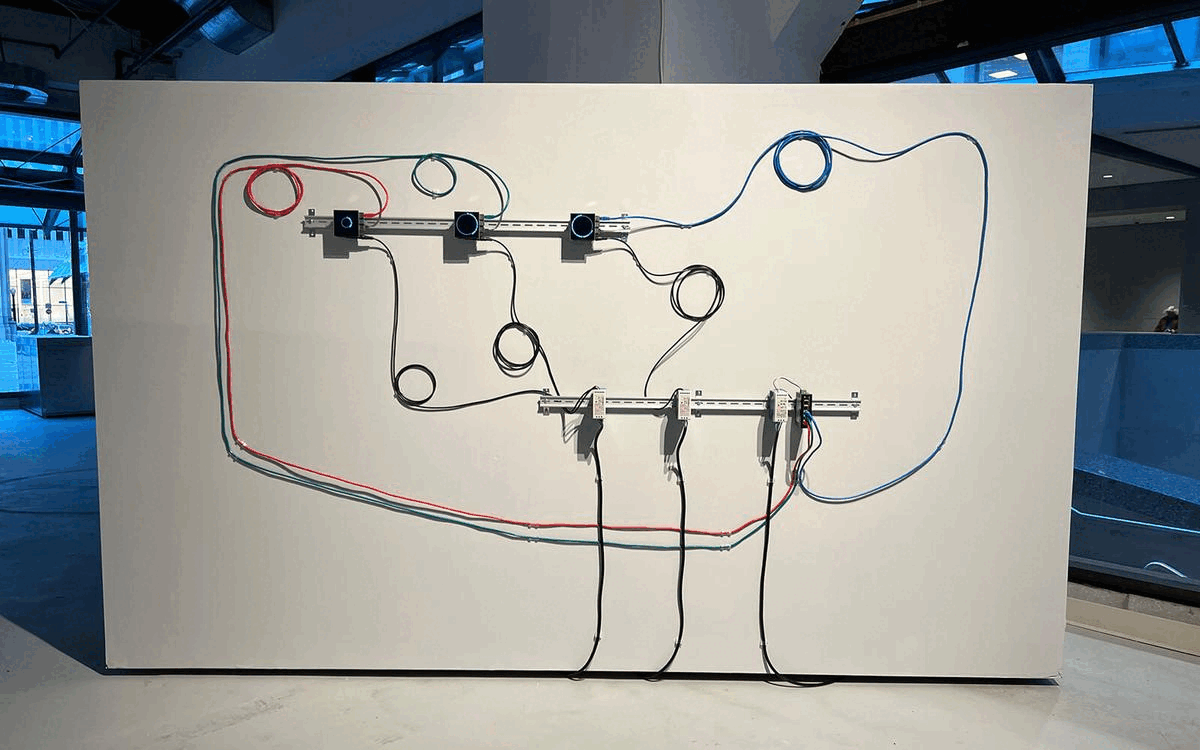
Much to the delight of writers, concrete poets, and ASCII artists, creative coders Play and EREN launch Typed, a text-based NFT market place on the Tezos chain. Featuring a spartan interface reminiscent of the Hic et Nunc glory days, Typed allows minting of bare-bones text entries, inviting all kinds of character-based experimentation. Within hours of being announced on Twitter, the platform was bustling with activity (image: Leander Herzog’s adaption of his generative art hit Agglo).
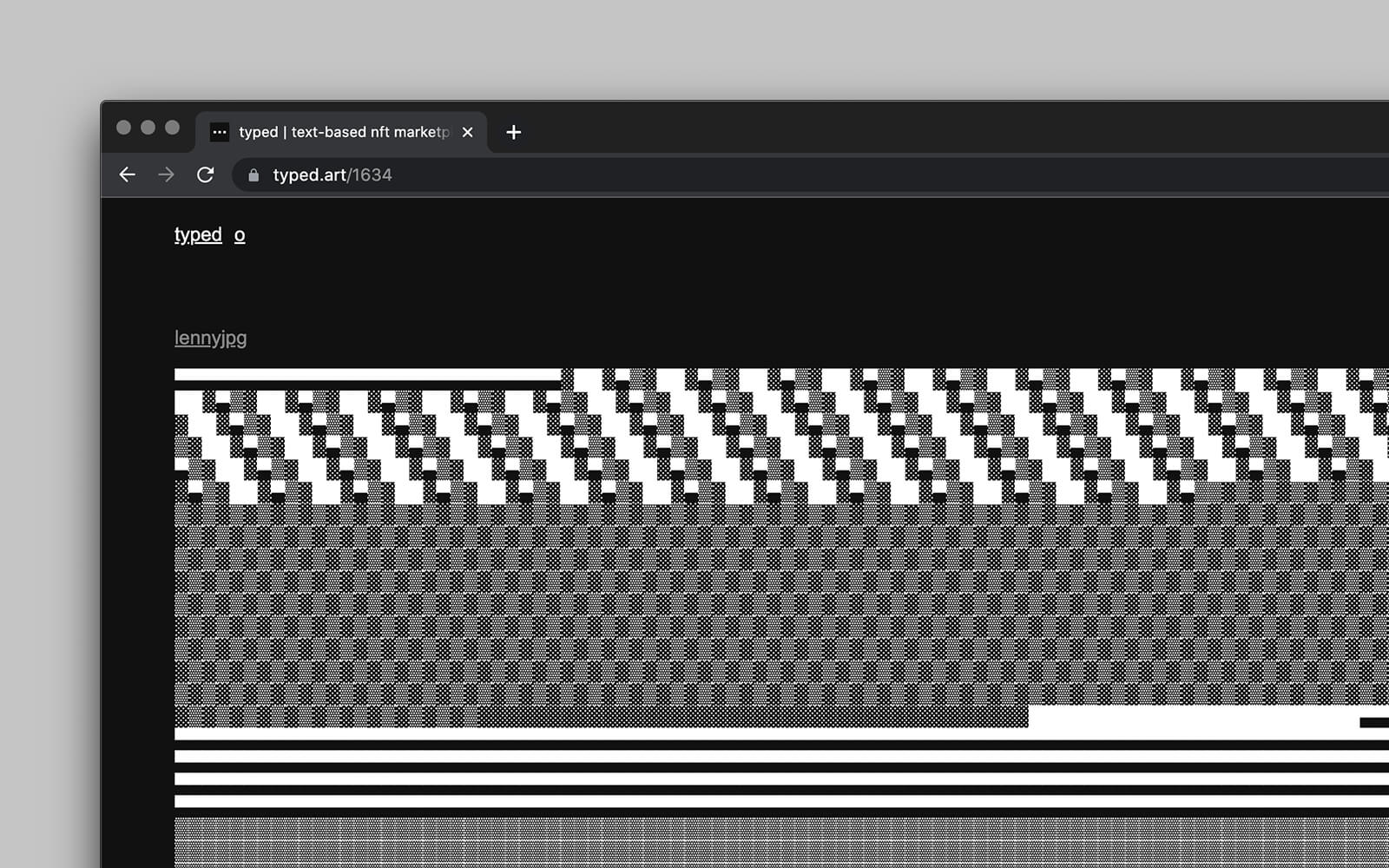
As part of her eponymous solo exhibition, American software artist Lauren Lee McCarthy performs a new iteration of her 2020 COVID response piece I Heard Talking Is Dangerous at EIGEN+ART Lab, Berlin. Whereas the original performance had McCarthy trigger text-to-speech monologues from her phone, Proceed At Your Own Risk invited the gallery audience to use the same technology (via a custom web app) to talk back.
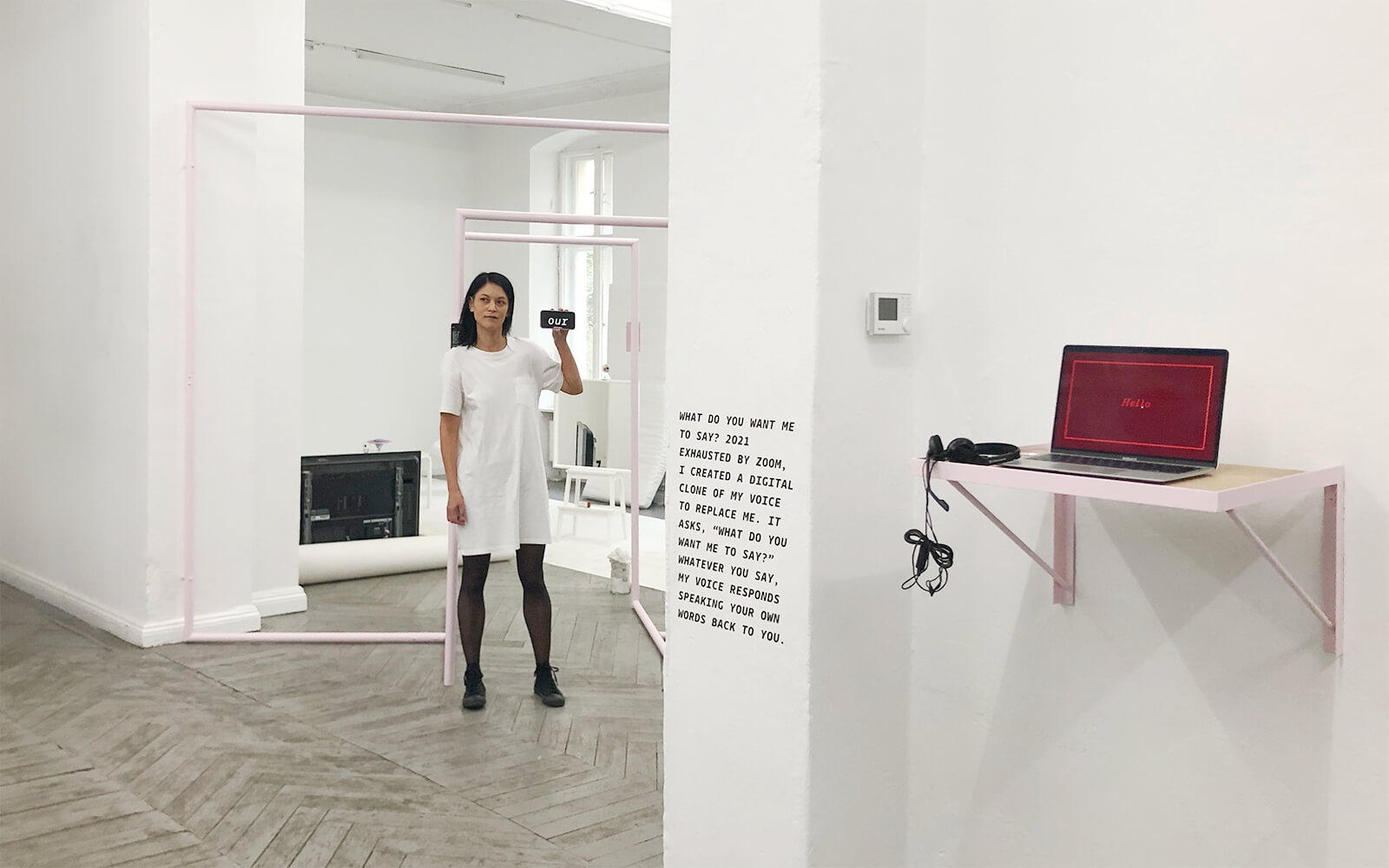
A survey of seven performance and software works that explore human connection during COVID, Lauren Lee McCarthy’s solo exhibition “I Heard Talking Is Dangerous” opens at EIGEN+ART Lab, Berlin. In the 2020 piece the show is named after, for example, a masked McCarthy delivers text-to-speech monologues about safety and distancing to friends—on their doorstep. Captured in documentation and artifacts, the works reveal moments of augmented, but real, intimacy.
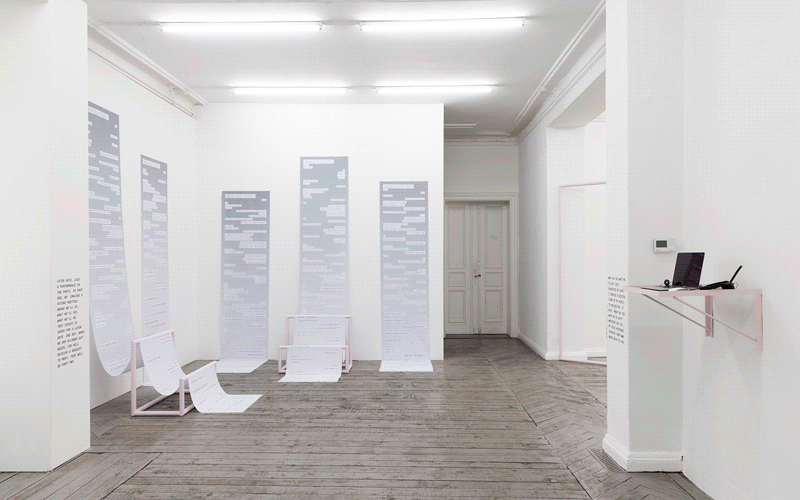
“Conceptually, working with NFTs has inspired me to continue evolving my hypothesis that poetry is a technology, a durable, adaptive data storage system for preserving humanity’s most valuable information—poetry as the original blockchain.”
“In 2011, Trifonov reviewed 123 definitions of life. Each was different, but the same words showed up again and again … he concluded that all the definitions agreed on one thing: life is self‐reproduction with variations.”
Daily discoveries at the nexus of art, science, technology, and culture: Get full access by becoming a HOLO Reader!
- Perspective: research, long-form analysis, and critical commentary
- Encounters: in-depth artist profiles and studio visits of pioneers and key innovators
- Stream: a timeline and news archive with 1,200+ entries and counting
- Edition: HOLO’s annual collector’s edition that captures the calendar year in print
